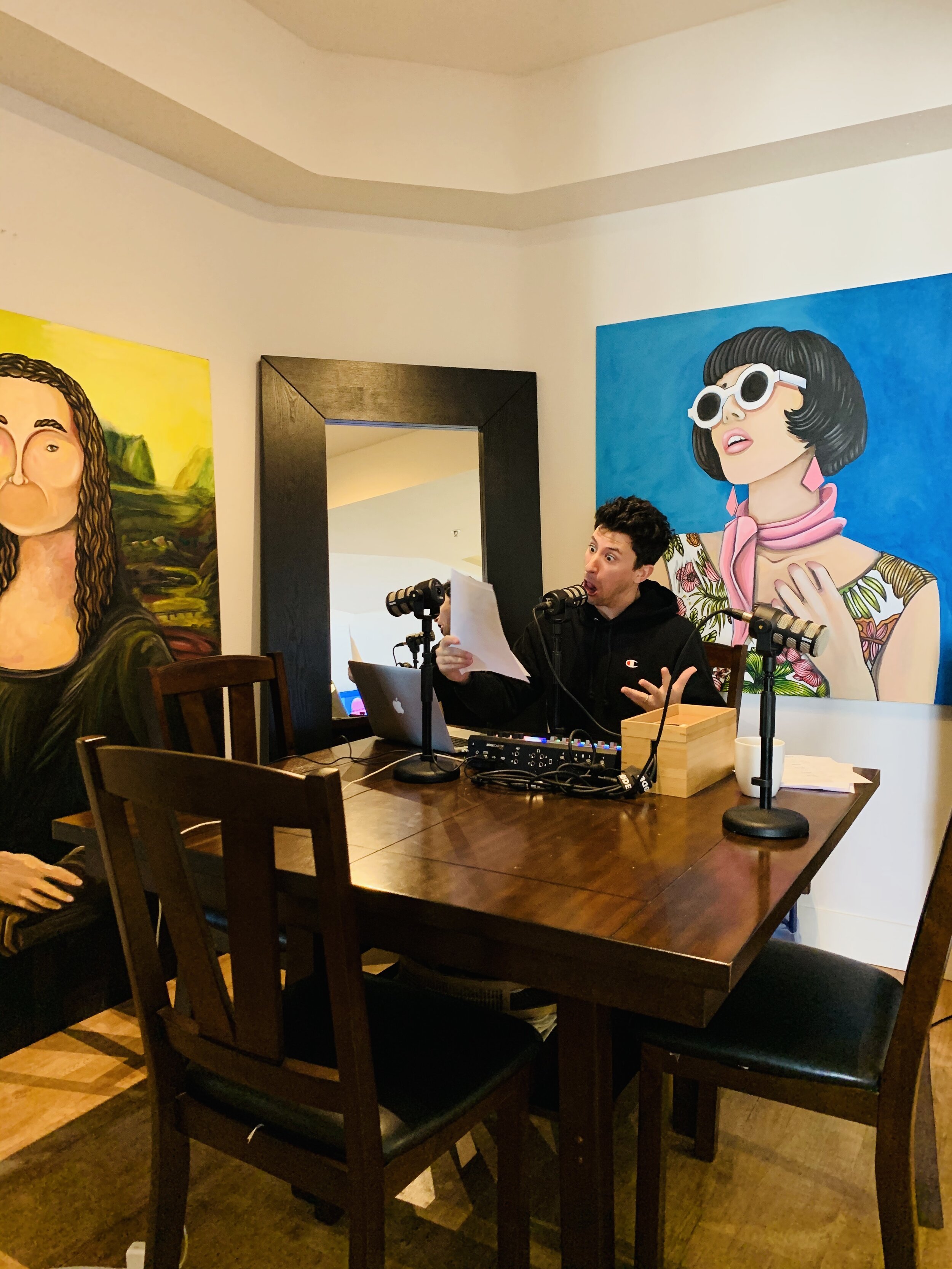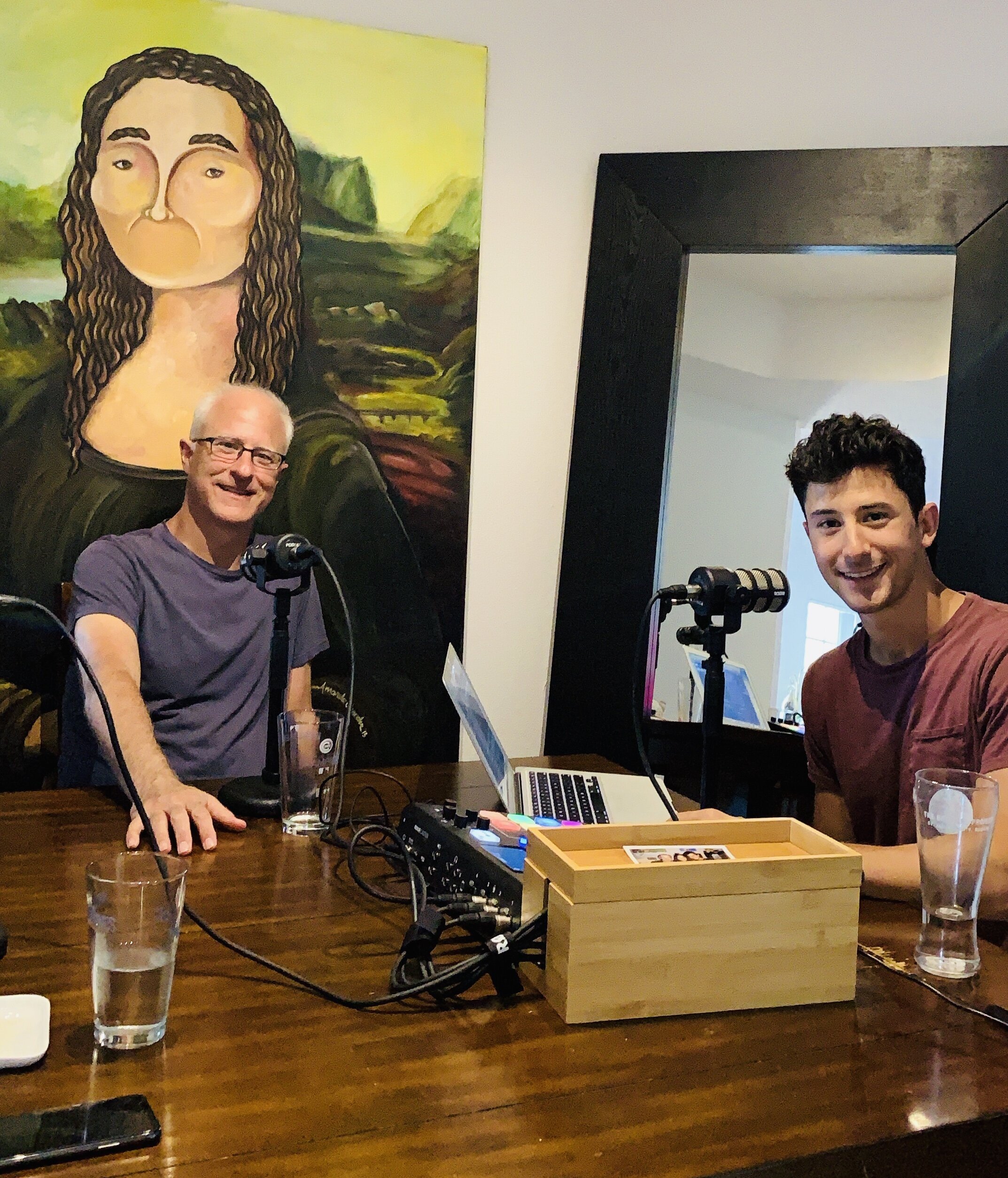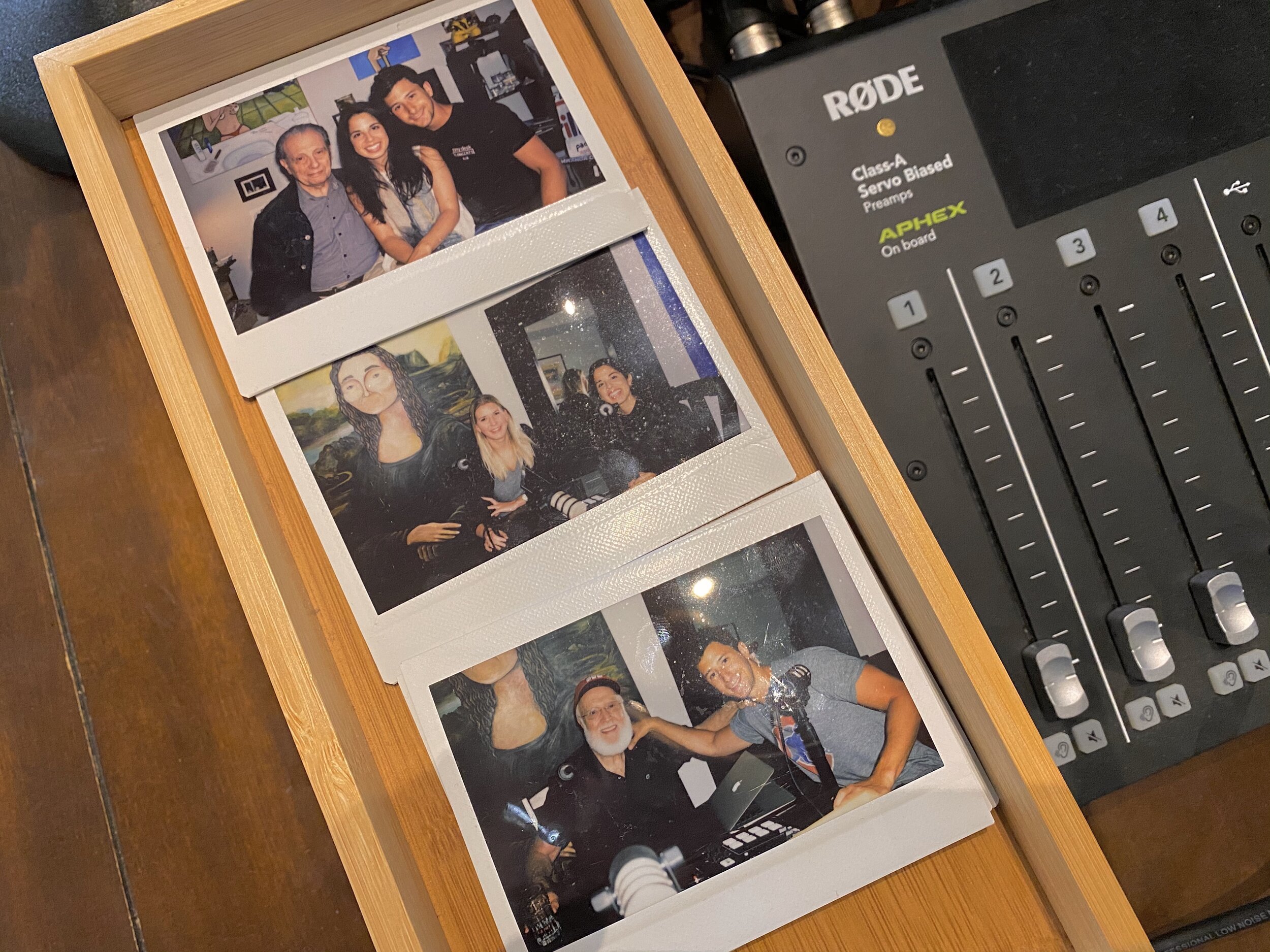The Joey and Amanda Podcast
When we first started recording our podcast, we would sit across from each other, cross legged and hunched over one small shared mic. As soon as we would cut, our backs would crack back into place and we would let out a “yowwwllllll” as we finally could stretch our legs. And while it’s funny to reminisce on the beginner days of recording, the quality of our audio was below average, especially compared to how it is now. So when we decided to take our podcast more seriously, we knew we had to up the quality of our equipment.
Joey dove into researching every brand. Every model. Learning about mics, sound mixers, and softwares, and he was definitely overwhelmed with all the options and needed equipment. We started with microphones. We had been using a Blue Yeti - and those are great mics. But it’s typically for one person to use at a time. Rode mics were a reoccurring recommendation the more research we did, and that was a familiar brand to us. Amanda had a small Lavalier Rode mic she would use during the old periscope days, and Joey knew of them.. Because he just did…
So we honed in on Rode. However XLR mics were new to us. We were unaware that we also needed sound mixers and audio interfaces and blah blah blah’s in order to use the Rode mics.
After watching countless YouTube video’s, soaking up all the information possible, it became clear that what we really needed was a RodeCaster Pro. It had everything we were looking for all built into one piece of equipment. It was a sound mixer, an audio interface, and a blah blah blah. AND it was made by Rode! Perfect!
Once we got the RodeCaster Pro we quickly realized this thing was basically an all in one podcast studio. It had a sound board that lights up with different color pads which can be queued up to jingles and sound effects of our choosing. It has 4 XLR mic slots, as well as a plug in for your phone and a bluetooth option to record over the phone. Adjusting audio levels is so easy and each headphone jack can be individually adjusted for sound level.
We have 3 rode mics that plug into the rode caster (even though we should have ordered 4 and still need to order a 4th) and they are called The Rode PodMic cardioid dynamic broadcast mics. They’re great and linked at the end of this blog. They have a pop shield built in to help catch plosive sounds which is crucial especially for someone loud and energetic like Joey.
Soooo. have our mics which plug into the rode caster pro which plugs into the MacBook air and records onto GarageBand.
We record our podcast and finish editing. Now what?
That file has to exported and turned into an MP3. Once you're done on GarageBand you hit share. Export song to disk and make sure you have mp3 filled out.
Now you want to get the podcast on Spotify and iTunes… Here’s where Joey spent 3 days of his life watching YouTube videos about.. You have to register your show on a host website which is where podcasts are uploaded to, once approved, and then distributed to iTunes, Spotify, and wherever else you get your podcasts.
So when we started, we used Libsyn, and recommend them. You have to pay for storage space and we had the $40 dollar a month option. If you end up going over your storage you can always buy more on the spot to cover you for the rest of the month so you don't have to worry about an episode getting deleted. At the end of every month everything being held in storage moves to the archive and your storage starts back at zero.
Once you’ve signed up on your host site and created and registered your show, Apple, Spotify, and all the others, pull right from your uploads on your host site. You don't have to upload to Spotify directly, Spotify picks it up from your host site. We had no idea thats how it worked. Cool stuff though.
We now use Acast as a host site and recommend them as well.
The cherry on top of our podcast was the intro and outro music. We had been using a free sample that we found on the internet that the artist was allowing people to use in their content as long as they shared the artists name - but we never were in love with it. Joey’s soon to be brother in law, Phil Stevens, is a musician. And a really, really good one. He was just getting out of school and about to launch into a career in music, with an emphasis on scoring films. So we reached out to him and he produced such a fun, positive, up beat and funky intro - the cherry on top.
All in all, starting a podcast appears daunting at first. So many options. So many steps and unknowns. But the key is just starting. Take it one step at a time.
What started as just a fun activity for us to do together has led to some of the most amazing moments with each other and our guests. Like Joey’s dad ( aka The Cookie Monster) . And a Holocaust survivor. And a Therapist.
So hopefully this blog helped as another crutch for you in starting your podcast journey. Take it one step at a time. Try not to get flustered, ask a lot of questions to as many people as you can along the way, and most of all, have fun. How lucky are we that we live in a time where we can just sit down in the comfort of our own and talk to everyone in the world? Just unreal.
Helpful links to products/brands we use:
To purchase RodeCaster
To purchase Cable Organizer
To purchase Headphones
To purchase Mics
To Custom Music



